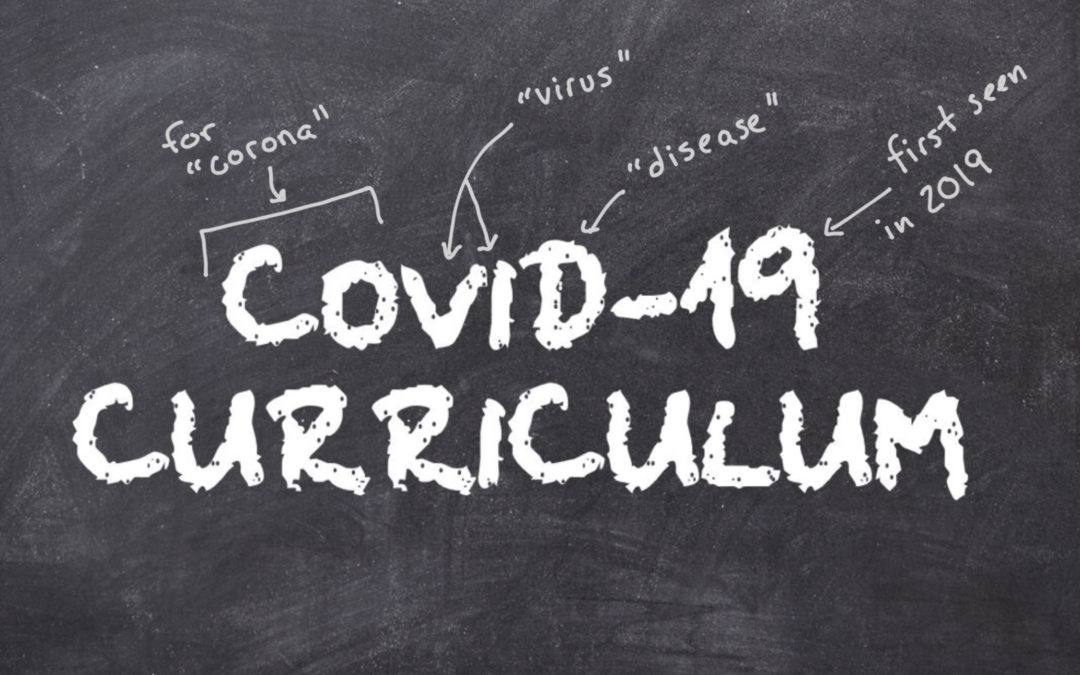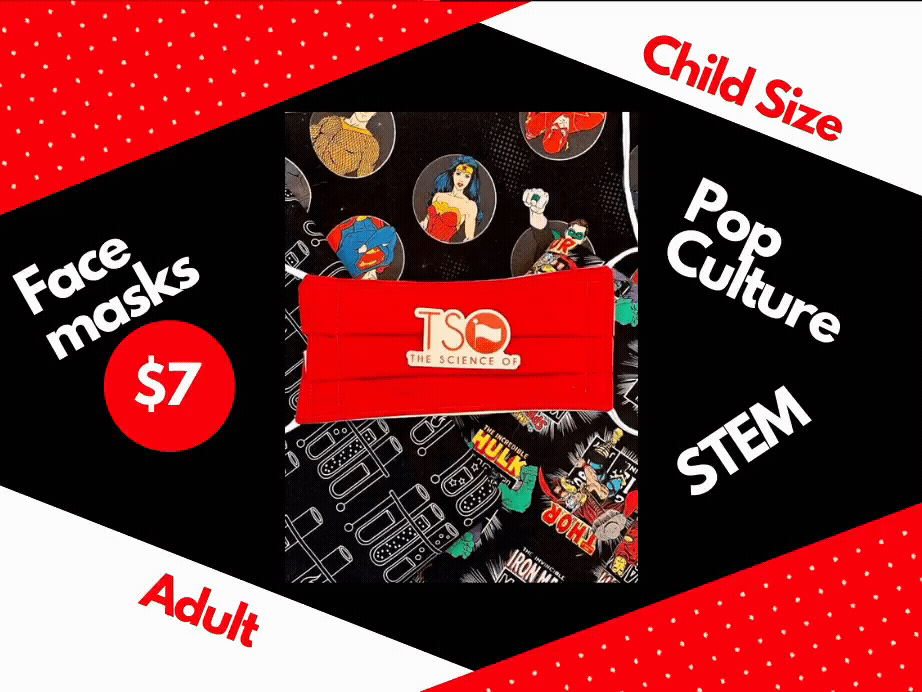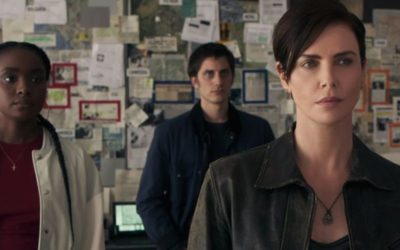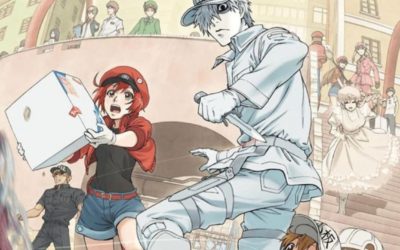One way or another, school will start again this fall.
But I’m not here to talk about that this time. As a public school STEM teacher (chemistry and physics), I’ve seen the plans for schools to re-start in fall, from the most magical and optimistic to the more reality-based, many of which contain at least a little magical thinking at this point. Trust me – speaking for every teacher or college professor you know, we’ve all aged a couple of years just worrying about how going back is going to work.
As I said in my earlier article about it, there’s no right answer about how students will start school again this fall. There are only answers that are different shades of wrong, and educational leaders have the utterly unenviable task of figuring out which one is least wrong and going with it. From there, they’ll be explaining and defending their decision to parents, students, faculty, and other stakeholders for the rest of their careers in the public sector.
But school will start again this fall.
And here’s my thing – STEM teachers have watched this pandemic unfold over the past several months with slight variations of the same feeling…you know that person at the movies who yells at the character in a horror movie and screams at them not to open that door, behind which the killer/monster is hiding, but you know they’re going to do it anyway?
Yeah, that’s been a lot of that feeling going around. Not with all of us, but it’s probably safe to say, more of us are having that “please don’t open that door…” feeling than aren’t.
If you allow me to speak for my field for a moment – yeah, we don’t like that feeling. It’s not good. It’s not fun. It certainly doesn’t make us feel like a lot of people were listening, or got a lot of what we were talking about when it came to STEM. Thing is, I don’t want that to happen again.
Again, like a lot of my fellow STEM teachers, I spent a good deal of my spring talking to my kids (online) about the virus, reminding them what they needed to do to stay safe, adjusting lessons to show how our course (Honors Chemistry) applied to it (soap vs. a virus, disinfectants, exponential growth, etc…), and how some of the information they were getting from the highest levels was just flat-out, demonstrably wrong.
I expressed to my stressed-out kids that this was a “once-in-a-lifetime” situation, something they would tell their grandkids about. With this coming year, I feel it’s time we need to make good on that claim.
Herd Immunity
I really don’t want to talk about herd immunity. I’ve done that enough. But just go with me for a minute: let’s think about herd immunity in terms of a model we can use since STEM teachers love us our models. The idea behind herd immunity is that if enough people have immunity (either from having been infected and recovered or via vaccine), the virus cannot infect a community, even where people are still susceptible. There just aren’t enough viable hosts for the virus to infect. The virus burns out. It dies off, and the population is largely left alone. There may still be infections, but you won’t have a large outbreak.
You see where I’m going right? Yeah – I think that model of herd immunity needs to become our model for STEM education in the short term. Pandemics and the lack of information – or flat out misinformation about them are the clear and present danger. The WHO and CDC are both suggesting that what we’re seeing now may only be the start, a second wave is always lurking, and oh, there’s a new, novel variation on the H1N1 influenza virus possibly looking for its chance to shine on the world stage.
I don’t want this to happen again. Any of it. Let’s get some herd immunity going with our students. If enough of them have the science chops – the working knowledge about viruses, viral spread, immunity and the rest, then we should be able to produce communities where false information and misinformation can’t get a foothold. Nerd Immunity.
So what I did, was looking for help. I reached out to other STEM teachers I know, or with whom I share social media groups, and asked for ideas. The idea here is to build a collection of ideas and resources for all STEM teachers to be able to grab an idea or inspiration for a COVID-focused lesson to their classes this coming school year. Not every lesson needs to (or can) be manhandled into talking about COVID, but I strongly feel it needs to show up as an example whenever possible and within large learning goals.
So here was my ask:
I’m Matt Brady – I teach HS chemistry and physics (IB), and my wife teaches HS biology (IB). Together, we are/run thescienceof.org – a nonprofit that uses pop culture to explain STEM concepts, mirroring the approach we often will use in our classroom. We’ve hosted workshops for students, presented at NSTA conferences, comic cons, local PDs, and everything in between.
…I’m reaching out to see if we can’t put our brains together to come up with ideas of lessons/discussions/labs/activities/research… anything, really, that we can do this fall and coming year that specifically will help our students better understand what happened with the pandemic (where it came from, how it spread, that data that was collected, the mitigating effects, etc…) from every angle of each letter in STEM.
I’ve been looking at my curriculum for the coming year through a COVID lens, and finding a few opportunities here and there to blend it in with my lessons (the chemistry of soap vs. coronavirus in chem; flying droplet physics in physics…), and am starting to develop a list of as many ideas as we can put together – bats and viral transmission in zoology? SARS-CoV-2’s targets in anatomy? Data crunching in math? Exponential growth in biology? PBL of a pandemic in a seminar class?
And I’m just looking for broad-strokes ideas that will work – not hypotheticals, lesson plans or step-by-steps, but ground-level ideas that teachers can then adapt and put their own spin on.
Full disclosure – like you, as a science teacher, I was pretty…horrified? Not thrilled? Ashamed? At the anti-science rhetoric and beliefs that quickly took over the national discussion about COVID, pushing it into a political issue based more on feelings and beliefs than data and science. Not sure about you, but I don’t think we can do that again, and I want to do everything I can in order to prevent it, starting with a generation of kids that will know the science of pandemics, viruses, viral spread, and every other STEM tool they need, so they won’t be swayed by the pseudoscience or false claims or flat-out lies that will come out either for the second wave or the next one. Let’s make a generation of pro-science warriors.
So – whatcha got? If you’re game for sharing ideas, please just list them here, or if you want to say more than a comments’ worth – just shoot me an e-mail: matt@thescienceof.org
And here’s what I got.
Some are ideas I pulled together, but my fellow STEM colleagues showed up and hit me with a ton more. I plan to keep updating this list as we all find more ideas, and more ideas come in (just e-mail me with any suggestions you have – matt@thescienceof.org, and keep checking back as we get closer to the start of the school year. Something that isn’t clicking right now may click as information on the virus changes or pieces fall into place in your plans.
Let’s go about this looking at the bigger picture, rather than strictly by STEM categories: Life Science and Physical Science…
And Math. Don’t worry math teachers, no one forgot about you. We love you. No, no one knows why you never get invited to our parties. Seriously. I mean, we always send the invitations.
Honest.
Life Sciences –
Okay – a deep dive into virology isn’t a huge topic in many biology classes unless put there by the instructor. Maybe it’s time to change that. Are viruses alive? (that’s a great debate subject…) How do they evolve? Why does SARS-CoV-2 appear to infect cats and other animals, but appears to leave dogs alone?
Virus transmission and infection are terrific general topics for coverage and can be scaled and differentiated for different age and ability levels. Use evidence and focus on SARS-CoV-2, the coronavirus that causes COVID-19 (and while you’re at it, perhaps a refresher on how viruses are named would be a great idea, as the handle, “COVID-19” still seems to confuse some people).
Keeping things focused on the virus itself, and depending on your time available, the characteristics of a virus’ spread – specifically, R-naught, and what that means for a community. R-naught, of course flows right into calculating the number of people who need to be immune to achieve herd immunity – and it’s easy math. Getting students to understand herd immunity and how we’ve managed to achieve it for specific diseases throughout our history would be a great idea given the term’s use, misuse, and overuse in the news.
And that’s just viruses in general. Clearly, and depending upon the level of your students, you can go down the molecular road into where the virus attaches to cells (ACE-2), take the anatomy and physiology approach of why so many cells have this receptor (STAT did a great recap of why this “respiratory virus” seems to affect so many other bodily systems), the viral “life cycle” (specific to SARS-CoV-2), the immune system in general (antibody vs. antigen – it’s an easy point for confusion), and how antivirals and vaccines do what they do.
And that’s just the virus in general. How the SARS-CoV-2 virus got from its host animal (whoever that is) to humans (and what roles, if any, bats played…)…that’s a great topic for zoology. And it’s never too early to have any student start learning what scientific literature is, such as: COVID-19: Zoonotic Aspects.
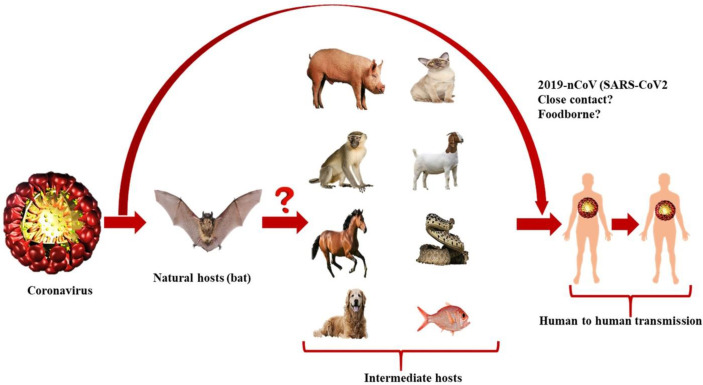
But enough from me – here are some other suggestions (Some of the suggestions were edited for clarity and any new suggestions will be dated and added to the bottom of this section):
Kate Inglis: I teach senior school Biology in Australia and we’ve been teaching through the whole pandemic – our school wasn’t locked down. Our topic for this term was infectious disease – the irony! We had many of the conversations you’ve mentioned above but also discussed ethics. In Australia, we’ve been strongly encouraged to download an app that can help with tracing contact to known cases so we discussed why some people have been opposed to downloading such an app. We presented it as a debate – the students really engaged in it. We were cautious however to also use other examples as while the science and data available is amazing – it’s worth being aware if students have been indirectly impacted by the virus. For example, parents losing their job, relatives getting sick, or even just the massive change to their lifestyle. Sometimes they need a break from the reality of what they’re living through!
Kate makes a great point – while the temptation to tie everything to COVID-19 may be there, be understanding of your students’ tolerance and the impact the virus may have made in their lives, which could include job loss, financial hardship, or even the illness or death of a family member.
Rebecca Wagner Alexander: Structures of SARS-CoV-2 proteins on rcsb.org, comparing viruses to bacteria, antibodies, and immunity.
The RCSB plays host to the Worldwide Protein Data Bank, which has a continuously updating section of COVID-19/SARS-CoV-2 Resources. Pointing students at the Data Bank’s daily updates can really help drive home the point that this is all-new, and they’re seeing science being made. Lots of great images and gifs as well.
And Rebecca’s point about viruses vs. bacteria…that’s a poster, a presentation…something. That can’t be talked about enough.
Sarah Galanti Shoemaker: If possible to acquire (NCBI BLAST) compare the genetics of Chinese lab strains of SARS and bat strains of SARS. Talk about genetic mutations and the evolution and mechanism of zoonosis. Such that students can debunk the idea that SARS-CoV2 was lab-created.
Tracy Terry: The National Center for Case Study Teaching in Science has rolled out a bunch (speaking quantitatively) of case studies related to Covid-19. Most of them are biological, but they have a nice search engine to peruse. You can download and modify them at will. You have to subscribe for a nominal fee and proof you are an instructor to get the answer keys.
The fee is $25/year
Cricket Gray: From a genetics/immunology standpoint. Why those with two X chromosomes are not as likely/susceptible to COVID as those with one X and one Y.
Frontiers in Public Health article: Gender Differences in Patients With COVID-19: Severity and Mortality
The Guardian: Why Does COVID-19 Kill More Men than Women? Researchers Grapple with gender mystery
Also genetics/evolution/immunology, why are there only certain living organisms that can be infected?
There is data to graph every day from the WHO at https://covid19.who.int
I had my kids do web-quests at the end of the year. It was two assignments.
Emphasize that science is a human endeavor.
Jim Weiss: Investigate what does it mean to be vulnerable to COVID? Why are young people less vulnerable to COVID? I teach the body systems and genetics during 7th grade, which includes the immune system and preventable issues like diabetes, cancer, heart disease. I was thinking about what does vulnerable mean – easier to contract the virus or vulnerability to the symptoms. This is especially important now that the youth are beginning to contract it more and possibly be the “vectors” of it in the future. Also, why does being overweight or out of shape make you more vulnerable?
I want them to connect on a biophysical level why the virus is more likely to thrive in some people more than others. Not make it so abstract.
Lab & Activity Ideas
Nicole Lynn Catherine: I do a lab during flu season that is so applicable now called the Fizz.
Supplies – corn starch, baking soda and vinegar
Every kid gets a foil cupcake wrapper filled with corn starch
I plant 1-2 kids depending on class size with baking soda instead. The kids don’t know who has the baking soda. The tin is their immune system.
They must “mix” with one person from their group and 2 more people from 2 other groups.
Return home and check with “indicator” to see if they caught the “fizz.”
We then do contact tracing for a few other days and they make a class map to trace back to “patient 0”
Alison Kluthe: I love the idea of testing the effectiveness of different masks. Example: Different materials, different amounts of layers, different filters…
Like many of you, I’ve been spotting the “Petri Dishes of Twitter” around on my feeds and loving them. I’ve already pointed out that all biology classes that want them to have a really easy lab or project this year…only to have a fellow teacher point out that while it may be cool to see how much bacteria collects on the plates in a classroom full of unmasked students, we can’t have a classroom full of unmasked students. We need to watch the conditions for the testing. What’s showing up online are, for the most part, laboratory/research professionals working in clean, controlled conditions.
The other issue, of course, would be sourcing the Petri dishes and agar/medium, which could be tricky in terms of getting to students if you’re doing this online. Mucho kudos to the teacher that can figure it out. Please share out how you’re planning to do this as a project if you are…
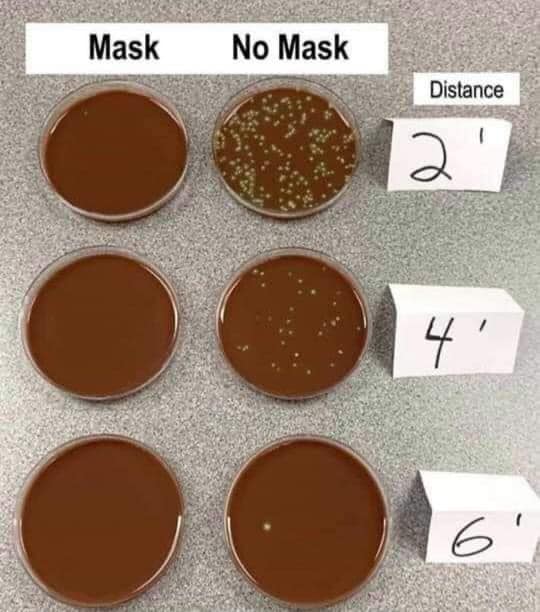
Two of the most popular ones I’ve seen come from the Facebook user “S-wake Amanda” and Microbiologist Dr. Rich Davis on Twitter. Davis’ Tweet is here. Fair warning – by now, both posts have pretty long response chains. You may be able to figure out how that goes…
Of course, it needs to be noted that both of the demonstrations were performed to show the benefit of wearing masks. Despite that the topic comes up in the responses over and over, no one is saying that these are virus particles colonizing the plates. The demonstrations show the effectiveness of masks at stopping droplets, which is suggested to be the most likely mode of transportation of the SARS-CoV-2 virus out of an infected person.
Another Twitter thread, showing droplets coming from a person speaking with and without a mask on from Jeremy Howard can be found here.
You’re probably grooving on these like I was in regards to turning them into labs or experiments that can be run in class, but again…not sure how having students without masks on will play out. Time to be creative and tweak out the variables. I’d expect science fairs to be full of these types of projects where the type of mask was changed, the exertion/breathing effort of the student varied, the distance, the time, etc.
And of course, this reminder from Suchetha Srikanthan: Safety issues! I would not have them do cultures anywhere but under a fume hood! We used to do versions of this – but Petri dishes were placed under the fume hood.
Of course, while we’re talking about spreading things, Glo Germ powder is an easy demonstration to get the idea of how easy it is to spread germs from one person to another. Glo Germ has their own classroom kits (both with powder and lotion), as does Educational Innovations, and the powder alone can be found on Amazon – remember, you need a black light to see it.
And back to masks for a second…pulse oxygen meters aren’t horribly expensive individually. Back in school with masks on, check oxygen levels at set time periods.
Physical Sciences
Straddling the line, and having both chemistry and physics on my schedule this year, finding ways to integrate coronavirus-related topics into my courses is something I’ve taken a particular interest in. I think the obvious one, of course, is soap.
Dr. Joe Hanson of It’s Okay to be Smart has the best informational & demo ideas I’ve seen for the basics of soap (and he includes alcohol-based sanitizers, a demo of Glo Germ lotion, and a bonus touch DNA extraction, which needs soap to bust open those cheek cells):
Watching the video, you can see that he made this while under lockdown conditions and gives some great ideas on how to make low-cost, low tech presentations either on video or effectively in person. With this episode out in the wild, it may be pretty tough to ask students to make their own infographic or video explaining how soap works…fair warning.
Another easy to grab example would be using coronavirus as an example in that early-in-the-semester dimensional analysis and scientific notation practice. SARS-CoV-2 is approximately 100nm in diameter. What are the pore sizes of various masks and fabrics? If the virus is so much smaller than the pores in fabric masks, why are we being asked to wear them?
Also – I’ve been increasingly interested in the ideas behind improving mask efficiency in filtering as well as being self-sanitizing. Wired ran a piece a little while back, 5 Weird Concepts to (Theoretically) Supercharge Mask Fabrics, and that touches on some directions companies are looking in, from incorporating basic electrochemistry to chemically making masks inhospitable for bacteria and viruses. I don’t have any clear ideas on approaches yet, but it seems a fairly accessible approach when touching on electrochemistry in AP (would putting a thin metal mesh in homemade masks make them more effective?), or general chemistry concepts (if droplets are exhaled on to a mask impregnated with salt – could the resultant salt solution be high enough to kill the inhabitants of the droplets?) There are lots of ideas and possibilities for virtually every content strand or standard.
On the “killing the virus” side of things, both chemistry and physics overlap in their coverage of the electromagnetic spectrum. If we were ever looking for a time to bring home ultraviolet light and specific wavelengths, there’s no time like now – with the talk of how UV-C can kill the virus, while other wavelengths hurt us.
On the engineering side of things, could ventilators somehow make their way into the class? There are lots of open-source ventilator plans out there – including the SmithVent design which recently won the @coventchallenge and produced a ventilator with off-the-shelf and 3D printed parts that costs 1/10 as much as a regular ventilator.
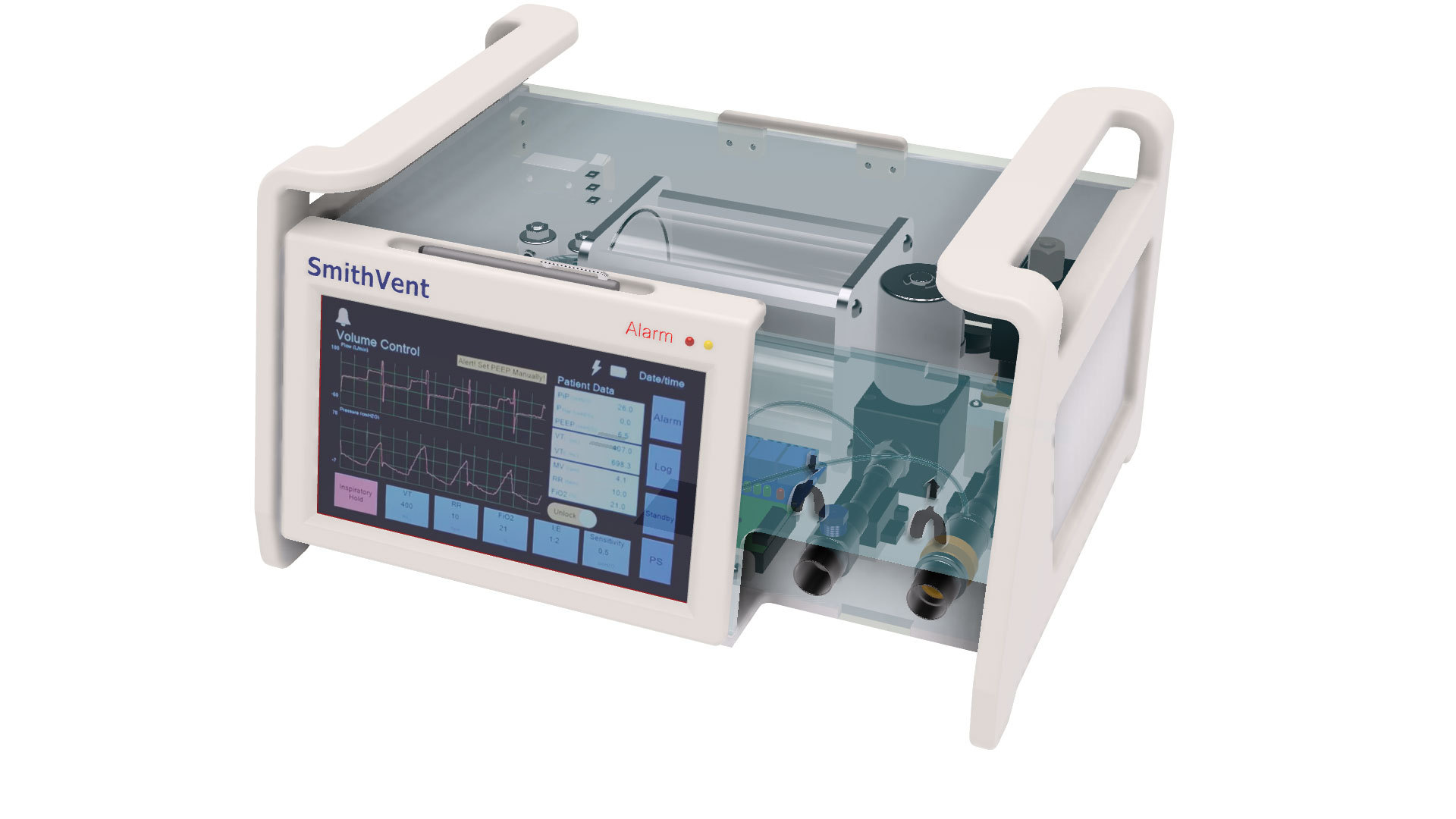
Physics – what about that flow through a ventilator, and the pressures required to properly ventilate a patient? What about the efficiency of different ventilator models? What is the physics and math behind having to split ventilators between patients, as some hospitals found themselves doing?
And of course, there’s the low-hanging fruit of airflow through masks, but measuring that will take a little bit of creativity.
But again, enough from me – here are some other suggestions (Some of the suggestions were edited for clarity and any new suggestions will be dated and added to the bottom of this section):
Glenn Curtice: My wife teaches math at the college level and they did an experiment with physical distancing and everyone in masks in a fairly large room. They noticed the folks in the back of the classroom had difficulty understanding the instructor (my wife) through a mask. My wife tried different mask styles, and they unscientifically determined (human ear, no dB meter) synthetic is better than cotton for speech clarity. My wife also mentioned the effort to keep her volume louder than normal. So you teachers going back to a classroom with students in the fall may want to consider diaphragm-strengthening exercises and getting your vocal cords ready. Your family might not appreciate the prep, but your students will.
On the experimental side of things, dB-measuring apps are available for phones of all types. Time to test out the inverse-square law? But remember – in order to get a control level, yeah – not sure how you’re going to be able to measure that without a mask on. Maybe after hours in an empty room, but then, you’re not accounting for the acoustic characteristics of students’ bodies in the room. My department doesn’t have a mannequin budget, and we only have the half-torso CPR dummies.
Tracy Terry: Someone with more time available than me should put together a pulse oximeter – O2 bond strength activity. You could even relate it to CO2 IR absorption and climate change.
Just to hit on pulse ox meters again, online outlets such as Wish offer them, but as with ordering anything from Wish…it’s an unknown as to what will happen first – school starts or the order gets here.
Ami Patel Johanson: How hand sanitizer works and the difference between methanol, ethanol, denatured ethanol, and isopropyl alcohol. You can discuss why methanol is bad to use and what denatured really means and why scientists use it. There are lots of possibilities of calculating how to get 70% alcohol when you can only find 90% or 80%. The CDC and WHO have a hand sanitizer formula you can use.
As a chemistry teacher, I know students can sometimes struggle over concentrations and volume. If possible, making hand sanitizer as part of a lab or activity is a simple, engaging way to get those ideas across. Oh, and as a resource on the toxicity of methanol angle: FDA Advises Consumers Not to Use Hand sanitizer Products by Eskbiochem
Suchetha Srikanthan: As a chemistry teacher also looking if possible for experiments that can be done at home safely, and also quantitatively – I would like to test the effect of different/ disinfecting substances. Other than for showing videos, or asking students to evaluate data ( good and bad) how can you do this? Do demos and take videos?
Glen Stanford: Effusion vs Diffusion. At home. Experiment with the family and a can of fart spray. Kids love pranks; have them quantify it with distance and time to family reaction.
Math
Oh boy. This one is as big as understanding viruses and their life cycles and infection rates, and masks, and…everything. We’ve all been marinated in numbers since this began, and if you checked any social media feed, everyone is questioning the numbers within seconds after they are released. In some cases, the questions are valid. In others…no – just calculating percent of people who’ve died from the virus as a part of the total population of the state doesn’t give us a meaningful mortality rate.
For starters – Sal Khan and Khan Academy have stepped up during the pandemic.
And Khan Academy also has a whole curriculum based on an Ebola outbreak, which touches on R-naught and modeling. It’s not COVID-19, but it does hit on the mathematical underpinnings of what we’ve all been hearing about for months…and perhaps the distance between Ebola and COVID-19 will make the math and the lesson a little more easily digested.
Exponential growth is another huge topic that can be taught at many different levels, and once it’s locked in, it’s hard to let go of. Plus, added in – why do the models of exponential growth never work out quite like they’re projected to throughout an entire pandemic?
I had a smaller number of suggestions for the math side of things overall, but for more ideas – check out the constantly-updating list of resources below…
Caitlin Boone: My friend’s doctor said they aren’t offering antibody tests and explained it this way – the results have been variable, with some false positives and some false negatives, so they’re not really helpful at this point.
I’d be interested in using conditional probability to evaluate that statement and answer the question: If a patient receives a positive COVID antibody test, how likely is it that they previously had coronavirus? If a patient receives a negative COVID antibody test, how likely is it that they have not previously had coronavirus? You need to know the rate of infection in the population and the test specificity and sensitivity, and I haven’t looked into how widely available/accurate that info is, but I do use a lab that would easily walk a newbie teacher through the process if anyone was interested in a starting point.
The lab will need a little adaptation and a bit of a facelift, but it applies nicely to the current pandemic.
Glenn Curtice: Basic statistics, and how to read statistical data presented in graphs – basic and important for everyone, even more so for STEM students.
Looking at the math side of population dynamics (ecology). Maybe an AP class modeling disease spread based on population density, which would combine math and biology.
General Ideas and Considerations:
Topics that don’t easily fit into one category, or topics that cover all categories. There are a lot of them that concern this pandemic, and possibly, putting everything together is the most important aspect of everything we can do in terms of COVID-19-based curriculum.
I really want to put together a massive, cross-curricular PBL on opening Disney World…but maybe that’s just me. I’m dying to know whether or not students would be more or less conservative than Disney itself is being (if they stick to their July 11th reopening date, that is)…I have this gut feeling that they would be more conservative.
Regardless of my Disney ideas, at the top of this list of course, is scientific literacy and critical thinking. The past few months perhaps have been the best example yet of enshrining C-E-R (claims-reasons-evidence) thinking in our classes and communication.
And communication…along with helping our students understand what’s going on within the STEM-side of things, we need to help them communicate that information – to other students, to other adults, and especially to their parents. Of extreme interest to that final point: Students Can Sway How Their Parents View Climate Change. Our teaching has never, ever stopped in the classroom, or with the student.
In terms of helping our students see through some of the influences that have historically swayed scientific results and how that science was presented to to public, Jim Weiss recommends Merchants of Doubt, Bad Science and The Age of American Unreason for discussion starting points, saying, “I’m looking to help students understand how politics and industrial lobbyists muddy the waters in scientific conclusions.”
Along with the ideas of larger interests influencing how science is presented, it’s always a good time to explore how the media presents science news. Sometimes this can be a bit of a chore, but in the pandemic era, finding clickbaity, sensational headlines every day is an easy task for students. Of course, connected to this theme is the question of science news sources. This is a topic that’s grown in the past decade with the rise of the internet, but now it can quite literally be a matter of life and death. And we can teach our students to recognize what “results were reported from a pre-print server, which hasn’t been peer-reviewed yet…” There are many media outlets who blithely put that in an article with a sensationalist headline, only to leave other outlets to mop up the mess when the pre-print never passes peer review.
Alexandra Clark: To combat the anti-science rhetoric it would be great to see something about pseudoscience or science that isn’t done or presented well or honestly.
Ethan Porter: Are (any of you) you old enough to remember an ABC Saturday morning cartoon called, “Science Court?” It was an animated show that put scientific principles before a judge. Very clever concept especially for younger science enthusiasts.
Some teachers have made unofficial worksheets and study guides for the series, and several can be found on Teachers Pay Teachers. Videos of episodes can be found via a YouTube hunt.
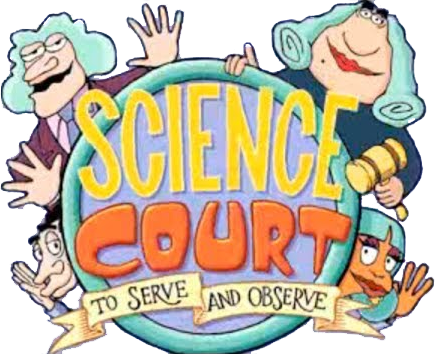
Additionally, what STEM careers will be more in demand post-COVID-19? What STEM careers got the spotlight shone on them during the pandemic? Are any of the scientists or medical workers available to talk to your class? You might want to think about that now, rather than August or September when everyone is going to be wanting to talk to them in their classrooms or via Zoom/Teams/Skype/Meetup. Along with that – what about the science in your community? How was that impacted by the pandemic? Did labs in a nearby med school pivot their research to focus on SARS-CoV-2?
Finally, as mentioned up top – we will all need to be careful and work with our schools’ respective student services departments to find out who among our students have been impacted by COVID-19, and care will need to be taken when talking about it. The last thing one of our kids needs to hear, or be pressed to talk about in a discussion is the disease that took a grandparent, parent, or another family member away from them.
Teresa Lewis: I’m struggling with this. I very much want to challenge the anti-science nonsense that seems so prevalent with COVID. I haven’t yet because I want to be very careful not to treat people like statistics or be accidentally insensitive to people who may catch it or have a loved one pass from COVID.
Why the Effort?
I hope I made that clear throughout. As STEM teachers, we all need to step up to teach our kids about the clear and present danger that’s knocking at our door. Whether you see that as SARS-CoV-2, or misinformation about the pandemic, it’s okay. We’re all on the same team. It’s time for us to remember why we got into this gig because it wasn’t for the money and universal acclaim. We got into this to make a change. To help people understand, to make new scientists and doctors and engineers and explorers who will carry just a little piece of our legacy with them as they do all their amazing things.
As STEM teachers, we stand on sacred ground – we have within us the ability to change the future for the better. But it’s going to take work to make sure our kids get this and understand this so maybe, they don’t repeat the mistakes of the generation (or two) before them. I don’t think I’m alone in saying that I’m not wanting to live through a repeat of this pandemic. We don’t have to. We’re teachers. We can fix tomorrow.
Let’s get to work.
Oh – and just a reminder, if you want to discuss anything here with other STEM teachers, or suggest resources or articles, please stop over at The Science Of’s Facebook page, and joint he conversation!
Resources (this list will be updated with major resources as they are suggested or spotted in the wild):
COVID-19 related articles – starting points for lessons and more:
Johns Hopkins: What is Herd Immunity and How Can We Achieve it With COVID-19?
Fred Hutch: Science Papers You SHould be Reading About the Coronavirus
Science: Coronavirus: Research, Commentary and News
Quartz: How to Read Coronavirus News Like a Science Writer
Ed Surge: What Science Classes Are Teaching Students About Coronavirus
Edutopia: Innovative Ways to Make Coronavirus a Teachable Moment
NSTA: The Science of Coronavirus Collection
CSUF: Future Math Teachers Link Math Lessons to the Realities of COVID-19
Coronavirus: A Book for Children – pdf
Lesson Plans, Activities, Inspirations and More:
NEA Today: How Teachers are Integrating COVID-19 Crisis Into Their Lessons
NSTA: Why did COVID-19 Cause Environmental Changes?
Ed Week Teacher: Teaching About Coronavirus: 3 Lesson Plans for Science, Math, and Media Literacy
Share My Lesson: Coronavirus Plans and Resources
Kathleen Currie Smith (math teacher): Stats, News and the Coronavirus…OH MY!
NSTA: Coronavirus Secondary Lesson Plans and Resources Collection
NSTA: Coronavirus Meets Physics? Making a Biological Topic Fit into a Physics World
NSTA: How Does a Pandemic Cause Less CO2?
Exploratorium: Viruses and Us
ICIAM: Mathematics of COVID-19
National Council of Teachers of Mathematics: COVID-19, Coronavirus, and Pandemics – Math Resources: Teaching and Using Mathematics to Understand our World


